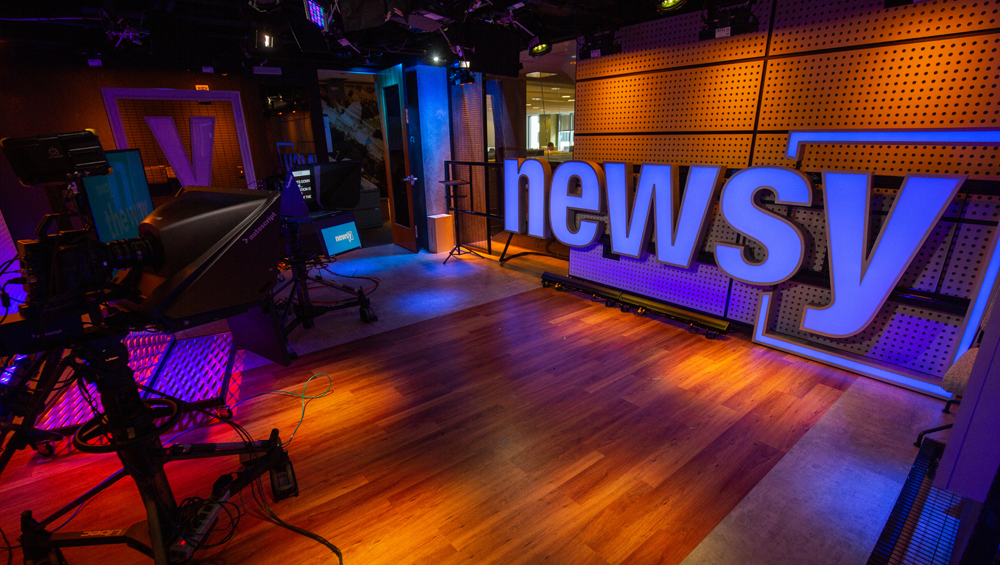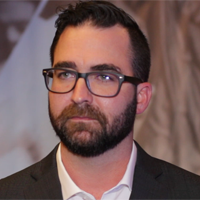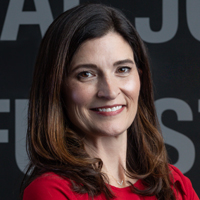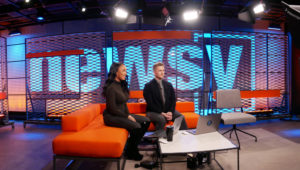
TVN Focus On Digital | Newsy Pushes Forward As Rivals Falter

As larger, chest-thumping digital news upstarts like BuzzFeed and Vice wobble mightily with multimillion-dollar losses and layoffs, E.W. Scripps’ Newsy is steadily and modestly growing and making a strong case that old-fashioned, nonpartisan reporting on multiple platforms is the best to reach and keep young news consumers.
Scripps bought the mobile-centric service from founder Jim Spencer in 2013 for $35 million and promptly moved it into OTT, making it one of the platform’s earliest news movers and helping it find a target audience of millennial viewers hungry for an alternative to deeply polarized likes of CNN, Fox and MSNBC.
“They’ve got a very interesting strategy,” says analyst Dan Kurnos, managing director, internet and media for The Benchmark Co. “They’ve succeeded where others have failed — guys like BuzzFeed, who were the talk of the town forever.”
Then, with a decidedly anti-ideological news stance, it widened its presence into millions of cable households beginning in 2017 (a move not without its own learning curve) and expanded its original programming to 14 daily hours, including ramping up collaborations with Scripps’ television stations.
Those moves are beginning to pay off. The company earned $25 million in revenue in 2018, marking 144% year-over-year growth. “It’s still small numbers, but it’s nice, steady growth,” says Carolyn Micheli, Scripps’ VP of corporate communications and investor relations.
Micheli says Scripps expects that revenue growth to be in the 60%-70% range in 2019 and that Newsy will move toward profitability by 2021 without cutting back expenses.
If Newsy follows that trajectory, it will mean twofold success. First, it would indicate Newsy’s brand of reporting — heavy on enterprise reporting and absent of pundits chewing over news cuds — resonates with its younger targets.
It would also validate the bullish, forward-looking digital business strategy of Scripps CEO Adam Symson. He sees the company’s future as a bifurcated path, keeping its core broadcast business strong while building up a national portfolio of diversified digital media holdings geared to next-generation audiences.
News Differentiation
At the heart of Newsy’s value proposition to viewers is a promise to sidestep cable news’ penchant for sandwiching reporting between hefty slices of bipartisan debate. That’s a format that Christina Hartman, VP of news and programming, says is broken.

Christina Hartman, VP of news and programming
“One of the things that’s problematic about the way political conversations play out on the national stage is they’re often presented as binary, and people have trouble presenting things from the perspective that two things can be true,” she says.
One example of how that plays out is the current immigration crisis at the U.S./Mexico border. Hartman says it can both be true that there’s a humanitarian crisis playing out with deplorable conditions and an overtaxed system unprepared for the influx it has received. Newsy’s job, she says, is to hold those two kinds of things in tension in its own reporting.
“It’s so much easier to tackle these questions by booking the flack from the DNC and the flack from the RNC,” Hartman says. “We don’t see a lot of value in that approach and format. We talk to people with lived experience on the issues we’re covering and we talk to academics who study the issues, but we don’t talk to pundits.”
Rather than fill its airtime with talking heads and panels, Newsy opts for more field reporting and enterprise approaches. And instead of getting waylaid by the latest political squabble or tweetstorm generated by the president, it devotes its coverage to stories like the Midwest flooding, child sex abuse in the church and 9/11 first responders.
“Newsy is distinctive for its story selection,” says Andrew Heyward, senior Knight researcher in TV innovation at Arizona State University’s Knight Cronkite News Lab, who has followed Newsy in his own work. “It picks topics that grow very naturally from the interests of its staff and leans beyond what local and national news tend to focus on.”
That staff is another key differentiator from Newsy’s peers. Newsy’s on-air reporters skew young and ethnically diverse, and “they also aren’t necessarily from the typical television news factory,” Heyward says.
“Younger consumers see through the overly groomed, formulaic quality of many TV news reporters, and Newsy doesn’t have that,” he adds. “Newsy is more authentic seeming.”

Newsy CEO Blake Sabatinelli
Newsy CEO Blake Sabatinelli says internal research found that one of the primary reasons people — particularly in the 18-49-year-old crowd Newsy is targeting — aren’t watching cable news is that they don’t like opinions injected into their news,
“It’s good to be different than the other guys,” he says. “It’s good for us to double down on journalism and investigative reporting and provide people with what they’re actually looking for instead of cheap air filler.”
Such reporting is expensive, and one of the reasons Newsy can keep a handle on costs is by hiring younger, relatively inexperienced reporters and keeping many of its operations in the small college town of Columbia, Mo., though it has added other bureaus in Chicago, Cincinnati, Denver, New York and Washington.
(Newsy shares neither its expense information nor its staff size).
Cable Play, Local Collaborations
As more news organizations turn to OTT as the next front to find audiences, Newsy is in the unusual position of considering OTT as its legacy platform, Sabatinelli says.
That view coalesced with Scripps’ acquisition of carriage contracts from the Retirement Living Television (RLTV) Network in 2017, putting it into an initial 26 million cable households, a number that has since edged closer to 40 million, according to Scripps.
Sabatinelli says the move shouldn’t be read as an admission of OTT’s growth limitations. “I see this as an accelerant on a business,” he says. “This is not us saying digital is not enough.”
He says cable has numerous upsides, not least of which is being positioned near to competitors like CNN and Fox News. “There is a certain percentage of the population who are looking for television where traditional television is viewed, and so for us to be there in that space allows us to be part of the conversation.”
Another upside was the play for scale.

Laura Tomlin, Scripps SVP of national media
“It was a moment in time to take a digital news organization created with a lean structure and expand it into cable without significant investment like some other cable news networks out there,” says Laura Tomlin, Scripps’ SVP of national media.
Analyst Kurnos says the move had obvious value. “It’s silly not to be doing what Scripps is, which is make sure you’re ubiquitous,” he says. “That way, whoever wants to access you, however they want to access you, they can.”
The cable expansion hasn’t been without its stresses, however. For a business that had centered on advancing digital video technology, the shift to accommodating legacy infrastructure has been demanding.
“You start talking about things like satellite uplinks, traditional ad trafficking and traditional measurement sources that you don’t really have to worry about as much on the digital side of the business,” Sabatinelli says.
Newsy’s cable iteration is a definitively more linear affair than its OTT and other digital platforms, and that has imposed changes on its newsroom as well.
Hartman says cable is less forgiving than digital on deadlines. “When you’ve got seven shows to put on the air every day, you’ve got to have deadline discipline,” she says.
She notes that prior to Newsy’s cable days, packages would just be stacked back to back in a machine-gun-fire fashion, leaving out connections between the stories and a lot more news material on the cutting room floor.
Those packages are still Newsy’s backbone on cable, but Hartman says much more work is done now to work with reporters to include additional information that creates a smoother, more seamless experience on linear TV.
In other words, in addition to being “critical to the long-term success and value creation of Newsy,” according to Tomlin, cable has also helped it mature as a news organization.
That maturity has led to another change at Newsy. Until the past year, Scripps had kept the company’s content in its own silo separate from its TV stations (technical collaborations — particularly on OTT and ad tech — had stretched further back). Now, two-way collaborations are proliferating.
Hartman says that Newsy will run up to 10 pieces a day from Scripps’ stations, capitalizing on the expansion of enterprise reporting at those stations.
Reciprocally, Newsy pieces will also run on Scripps’ local air, retaining the Newsy branding when they do. Scripps now has a point person facilitating those daily collaborations and overseeing the seamless insertion of content across the divisions so it isn’t too jarring for either audience.
Breaking down those silos represents an important step in connecting Scripps’ local and national businesses, Tomlin says.
“We’re always looking to leverage our expertise and journalism across every platform where we do business,” she says.
The Path To Profitability
The plummeting revenues and bloodletting at digital behemoths like Vice, BuzzFeed and HuffPost have led many to consider the prospect of a digital bubble and question news’ sustainability on the platform. But analyst Kurnos says Newsy is so far immune from such speculation.
He says Newsy’s $25 million in 2018 revenues “is not enough to move the needle” inside Scripps’ $1.2 billion overall revenue, but nor is it headed to the same shoals as the much larger digital ships around it.
“I do not believe they are anywhere near running into any kind of massive hurdle or headwind,” Kurnos says.
Which isn’t to say Scripps’ investors have clamored to support its national efforts like Newsy, either. Micheli says “it takes a pretty strong stomach” to speak to investors about its national division sometimes, similar to the struggle former CEO Rich Boehne had when the company launched HGTV and the Food Network two decades ago before spinning them off.
 Tomlin says the company’s leadership holds to the narrative that “two things can be true at once,” and Scripps can focus on its local broadcast operations while developing new businesses.
Tomlin says the company’s leadership holds to the narrative that “two things can be true at once,” and Scripps can focus on its local broadcast operations while developing new businesses.
“We’re disciplined operators on both the local media and national media sides,” she says.
Scripps asserts that a bruising proxy war last year led by investor Mario Gabelli had little to do with dismay over its digital businesses, citing a fight letter in April 2018 from Gabelli. “He outlined that he wasn’t happy with our margins in the broadcast division,” Micheli says. “That was really the focus for him in the proxy contest.”
Kurnos gives CEO Symson high marks for cultivating both sides of the business. “Adam has a 20-plus year background in the media industry,” he says. “He has always understood that TV is at the heart of what he does.”
Symson has also given guidance as to the growth of Scripps’ national division, including Newsy, Kurnos says, noting those enterprises have given the 140-year-old company its best shot at further longevity.
“He’s done what he needed to do to at least position this company to have a chance in the evolving landscape,” Kurnos says.
If that evolving landscape holds as big a place for de-politicized news as Scripps believes, then Newsy may share that longevity.
































Comments (0)